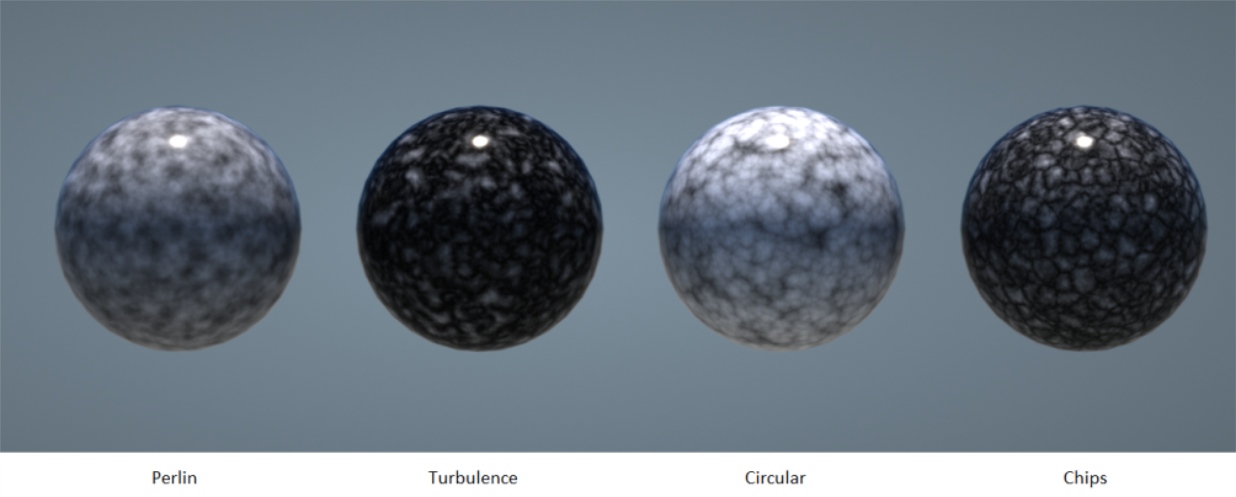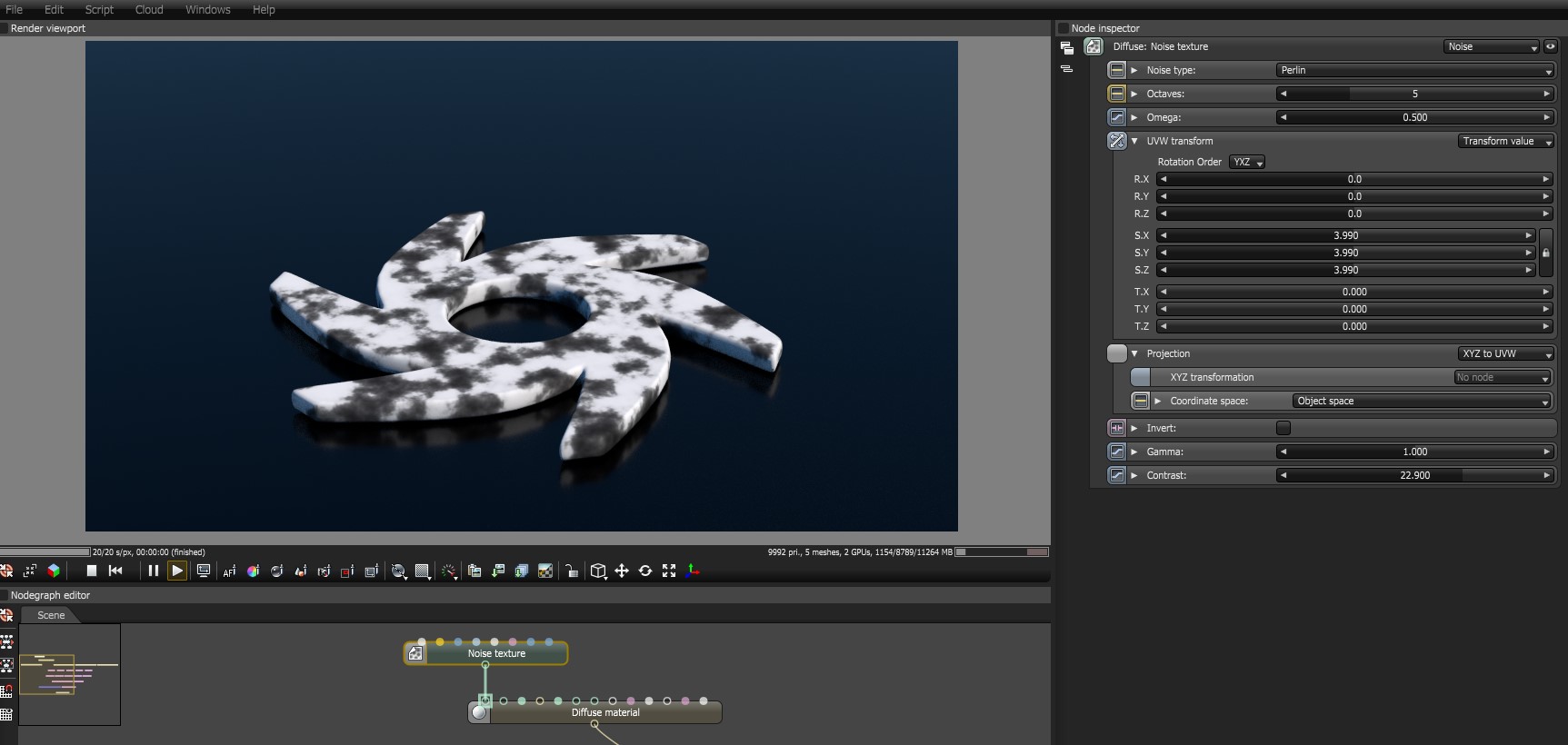
The Noise texture generates four different types of Procedural noise, and the settings give you the ability to produce a wide variety of noise effects. The four types of noise are:

Figure 1: A comparison of the four different noise types

Figure 2: Noise texture connected to a Diffuse materialUsed for dull, non-reflecting materials or mesh emitters.'s DiffuseAmount of diffusion, or the reflection of light photons at different angles from an uneven or granular surface. Used for dull, non-reflecting materials or mesh emitters. channel
Noise Type - Select from four different noise generators.
Octaves - Sets the noise detail's scale.
Omega - Controls the fractal pattern detail.
UVW Transform - Positions, scales, and rotates the surface texture.
Projection - Sets how the texture projects onto the surface.
Invert - Inverts the Noise texture values.
GammaThe function or attribute used to code or decode luminance for common displays. The computer graphics industry has set a standard gamma setting of 2.2 making it the most common default for 3D modelling and rendering applications. - Adjust the Noise texture's luminance values.
Contrast - Adjusts the Noise detail sharpness.